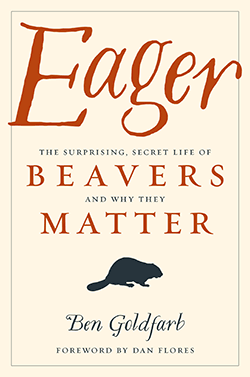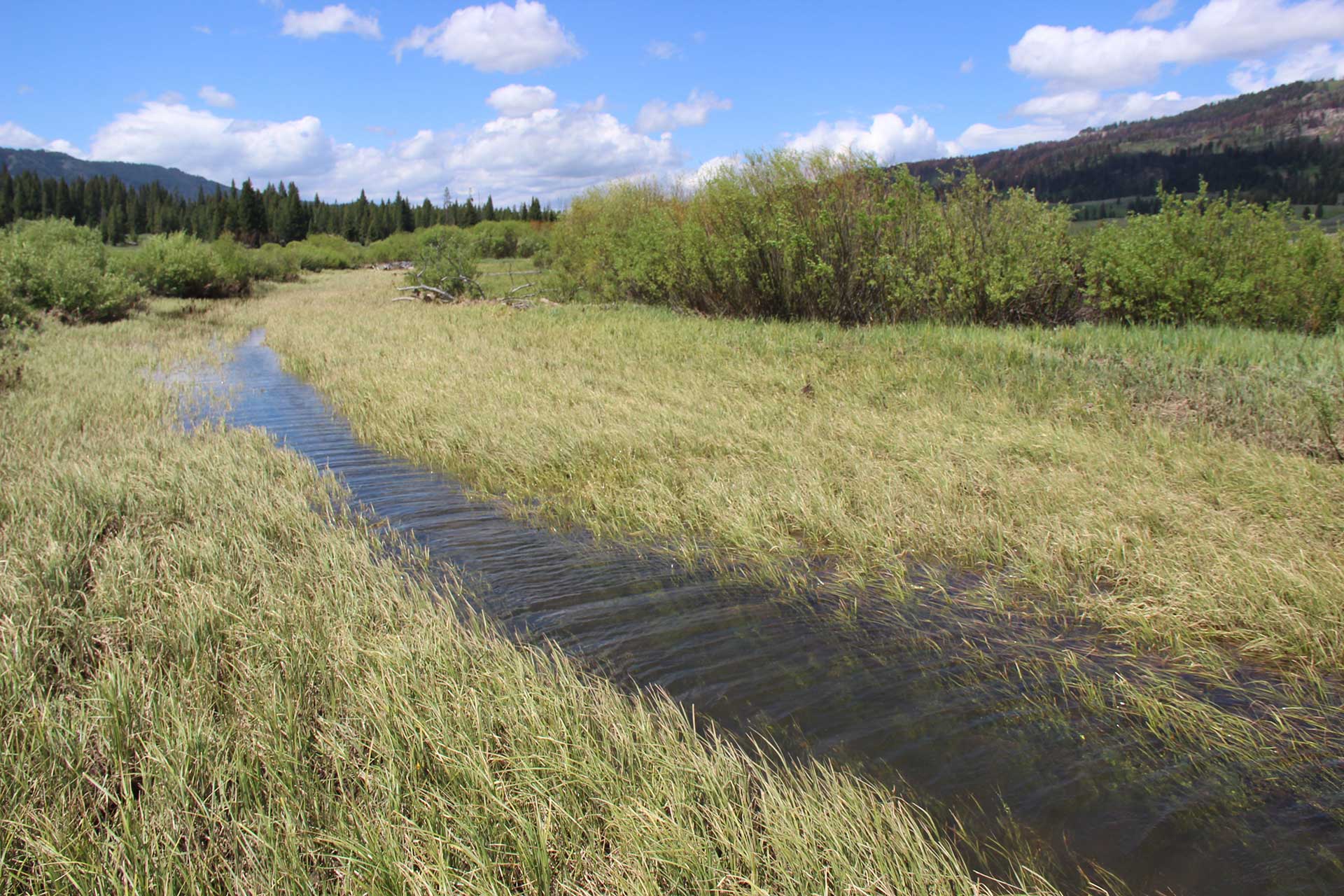Another reporting anecdote that stood out to me was your visit to Half-Tail Dale. I believe you were invited to smell him.
That’s right. Half-Tail Dale was a beaver from central Washington, a captive of the Methow Beaver Project that I described earlier. One curious thing about beavers is that the males have no external genitalia. After all, if you’re an animal that spends his life swimming through underwater piles of sticks, you don’t want anything that can snag, which is why all of their reproductive anatomy is internal. This makes it impossible to visually tell a male beaver from a female beaver. The only way to differentiate the sexes is by smell. Beavers secrete a strong-smelling substance that they use to mark their territories. So, basically, you have to pin the beaver down, squeeze out a dollop of secretion from its scent gland and take a whiff. If the stuff smells like cheese, it’s a female, and if it smells like motor oil, it’s a male. At least that’s what I was told. When I actually smelled poor Half-Tail Dale, I just got a very powerful whiff of beaver.
What other reporting stories stand out most in your mind?
Lots of Beaver Believers work in conservation and care deeply about environmental issues. But one of the cool things about this movement is that many of its most enthusiastic members are ranchers in conservative places, like northern Nevada. A highlight for me was spending time with these cattlemen, who are not prototypical environmentalists but have nonetheless become wholehearted Beaver Believers, because they recognize how important these animals are for storing water, irrigating pastures and creating forage for cattle. During one prolonged drought in Nevada, for example, ranchers who had no beavers on their land had to remove their cattle from the range, whereas the guys who did have beavers were able to weather the drought much more successfully. These old-school stockmen in Nevada have become great stewards of their beaver populations, because they recognize the benefits so clearly.
You’ve written many magazine features, but this was your first book. How was the process different from writing for magazines?
One thing that’s always frustrated me about magazine writing is how much you have to leave out. You’re always writing for a word count, and inevitably so much interesting material ends up on the cutting room floor. In a book, you can follow your curiosity wherever it leads.
One example is that beavers, for a long time, were hunted in Europe for their castor sacs, a set of glands that produce some of their scent secretions. Castoreum, the substance produced by the castor sacs, was long prescribed as medicine for everything from constipation to epilepsy; more recently, food companies used it as a flavor additive to soft drinks and ice cream.
Centuries ago, there was this myth, actually perpetuated by Aesop, that if a beaver was being pursued by castor hunters, he would chew off his own testicles and then throw them back to the hunters as if to say, “Just take what you need and let me go in peace.”
This makes no sense. Beavers have no external testicles to chew off, and castoreum isn’t produced by the testicles anyway. Even so, it was a widely cited urban legend. If I stumbled upon that anecdote in the course of researching a magazine story, I’d probably have to stick it in the scrap heap and just mention it at a cocktail party. But in the book, that kind of weird detail can go right in.
Were there downsides to writing a book? I know you dealt with some anxiety, including after the book was written, when you were worried about how you’d described certain stream restoration techniques.
When you write a book, you’re trying to write a definitive document, and with that comes some pressure of representation. One of the hard things about being a writer is that you’re telling other people’s stories. I’m the conduit for people who have worked for decades on beaver issues, who know more about beavers than I ever will. I am the imperfect mouthpiece through which they speak to the world, and that can be intimidating, but it’s also what it means to be a writer or a journalist. I’ve tried to make peace with that.
It seems like beavers can be a significant solution to some of the water woes out West. Are you hoping that this book could affect water policy there?
My book’s primary audience is the layperson who wants to learn more about these amazing animals and how they’ve shaped our world and our history. But there’s also a secondary audience of experts: people who work in water management, wildlife biology or conservation and could potentially use Eager to inform their decisions. So, sure, I do think about the ways in which this book could guide policy. I just did a spot for a public radio station in Colorado about this libertarian gubernatorial candidate who basically has one plank in his platform, which is: “We need more beavers to store water in Colorado’s mountains.” Practically the entirety of his candidacy is built on beavers. Maybe that’s a sign that these strange niche rodents are entering the zeitgeist.
Geoffrey Giller ’10 has written for Discover, Scientific American and several other publications. His last piece for Amherst was the Fall 2017 feature on geologist Frederic Brewster Loomis, class of 1896, who unearthed the College’s mammoth skeleton.







